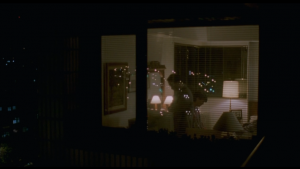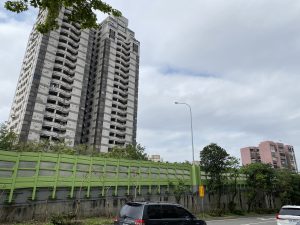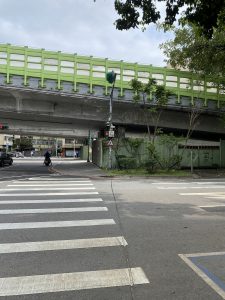YI YI, Edward Yang (2000)
Jian Family’s apartment area, Da’an, Taipei, Taiwan
Released in 2000, Yi Yi tells the tale of a middle-class Taiwanese family and their almost relatable and mundane emotional struggles with daily life. Although not the grandest or most memorable location in the film on the surface (compared to the Grand Hotel or McDonald’s) in fact a signifcant amount of time is spent in or around the area of the Jian Family’s apartment area located along Xinhai Road and parallel to the Jianguo Expressway. Yang masterfully crafts a film centered on the Jian family’s daily life but keeps us intrigued through brilliant visual stimulation and a fantastic script that elevates his movie into something uncomfortably real (for me) with his main characters and their interaction with the environment, each other and one-off characters. The field trip I took further solidified the sense of familiarity felt throughout the film. The film portrays reality very successfully and the atmosphere of my visit for the most part matched the atmosphere portrayed in the film – a busy residential intersection in Taipei.


The apartment to this day remains by far the tallest building along that section of Xinhai road, which the film expressed through its frequent balcony scenes overlooking the streets and expressway below. The regular use of the Jianguo expressway as a backdrop from a tall building (whether it be the balcony or through reflections on the window) throughout the movie articulates the bustle of an increasingly modernized Taipei. Although the Jian family are the main characters in this movie, Yang constantly reminds the viewer using the busy expressway that they are only 1 family amongst thousands in Taipei which serves to ground the movie in reality.


Just across the apartment building, underneath the expressway is the walkway where Ting-Ting and Fatty exchange letters and eventually get to know each other. The walkway is featured prominently from 2 angles – from the balcony and from the ground level. From the balcony Ting-Ting is unable to clearly see the walkway due to the trees planted around there and is therefore metaphorically unable to enter Fatty’s life. But once she is on ground level with Fatty, the trees and large imposing expressway change purposes and serve as a shield and a way for her to protect herself from the drama and discourse of her family life (in particular her guilt towards her grandmother). Just as Yang would have probably liked it to be, not much has changed between the movie and real life. A major difference would be that parts of the area has ben cordoned off for reconstruction which ends up causing the real life experience to feel a little more claustrophobic compared to the open area presented in the film.
— Yi Ko (Danny) Wo, 3035709253
Your reflection upon the appropriation of mundane spaces and their relatability to real daily life is fairly on point. If you would, you can take this as an entry point to elaborate more on your argument. In what way is it relatable and “uncomfortable real”? Perhaps you could relate that also to De Certeau’s “space as a practised place” and make your argument even more compelling. Another intriguing point is the one you made in the last paragraph, how two different angles of an exact same place are utilised as a way of narrating stories between the two characters in the film. You might want to take a closer look at Nezar AlSayyad’s piece, “Voyeuristic Modernity: the Lens, the Screen and the City” from Lecture 4 readings and see if this piece could help you to elaborate even more on this particular take. When you do so, remember to cite properly as well.